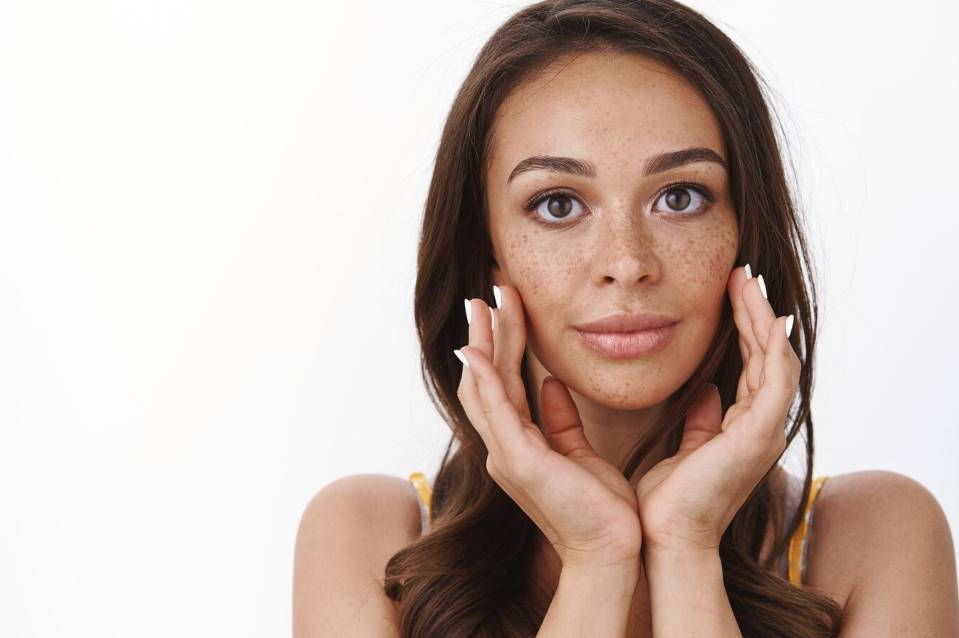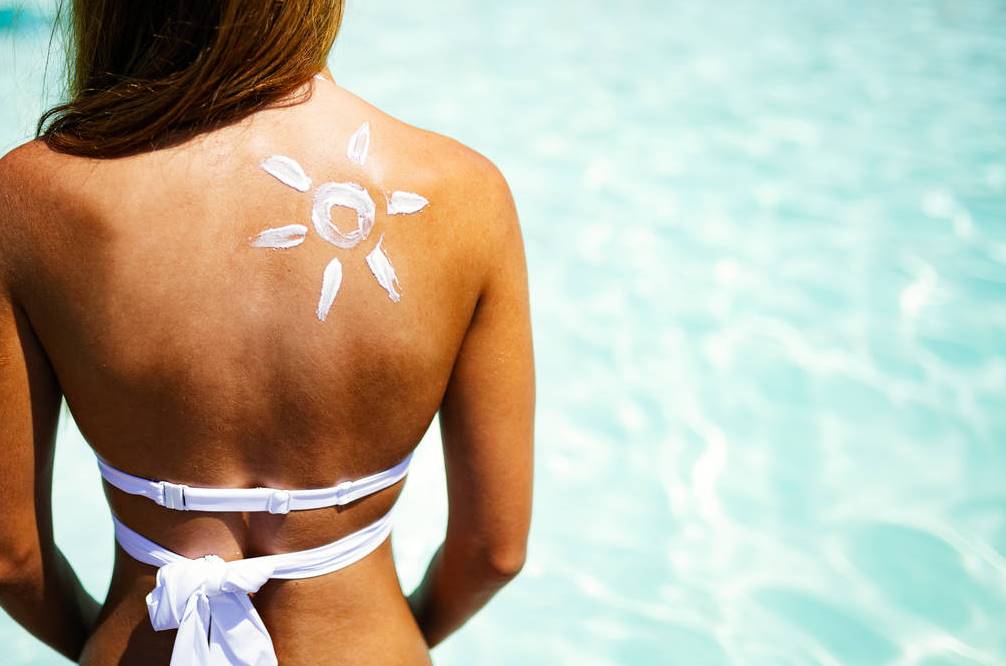Tan and endearing. Tan and physically fit. Invitingly golden. You are well aware of these points. A good tan is essential for a nice appearance. Everyone, year-round, wants to maintain their summer tan. You can get the desired effect with the help of a spray tan.
The chemical Dihydroxyacetone (DHA) is essential to the process. These substances are colourless but change appearance when they react with the skin's natural amino acids.
When the skin cells collide, they darken each other by many shades. Even while spraying yourself with a chemical that makes your skin cells brown may sound a little strange, DHA is entirely safe.
There is no evidence that using it as a beauty aid is harmful, and the practice has been going on for decades. The effects of DHA often wear off within a week. To keep your tan looking fresh, you should make regular appointments at a spray tanning facility. Read on if you're curious about the science behind spray tanning
What Is A Spray Tan?
Body mist container spray tan is a form of cosmetic application in which a tanning solution is sprayed into the skin in a fine mist. The amino acids in your skin's dead outer layer react with the DHA in the solution to temporarily darken your skin. The duration of this procedure varies from minutes to hours, and the effects often endure for a week.
Many people turn to spray tanning to get a temporary "tan" without exposing themselves to the sun's potentially damaging UV rays. Compared to tanning beds, this method requires only one or two applications to achieve the desired result.

How Spray Tans Work?
Spray tans use dihydroxyacetone, or DHA, as the active component. DHA is derived from glycerine. DHA gives the appearance of a tan that fades over time by reacting with and binding to the amino acids in the dead skin cells of the skin's outermost layer.
The "Maillard reaction" creates melanoidin pigments and is named for the person who first identified it. This is analogous to how sun exposure causes your skin to create the pigment melanin.
Applying spray tan to the skin takes about two to four hours, and the tanning process can last anywhere from 24 to 72 hours. Spray tans often only last one to two weeks since our skin constantly sheds dead skin cells. Keeping a tan requires many trips to the tanning parlour (or frequent touch-ups at home).
Does Everyone Benefit From Spray Tanning?
Young ladies are embracing When it comes to tones! The lovely sunless tanning results are available to people of all skin tones. However, those with darker skin tones may experience an uneven or patchy tan since the colour does not take evenly. Similarly, those who have sensitive skin or are allergic to the ingredients in the spray tan solution may experience an adverse response.
In general, spray tanning is a good choice for those who want a flawless tan without much effort, and it works for most people. As previously mentioned, while scheduling your spray tan session, note any concerns or special requests you may have.
Is It Worth It To Spray Tan?
Spray tanning, when performed properly, may make one look radiant and healthy. The skin care benefits of spray tans are as follows.
The Benefits Of Spray Tans
- Spray tans allow people to seem tanned without exposing themselves to the sun, which can cause photodamage, early aging, and even skin cancer. They are a good alternative when the sun isn't out long enough to tan the skin naturally.
- A spray tan is suitable for people of all skin tones and textures. No matter your skin tone, a professional beautician can mix up the right glow for you.
- Spots, freckles, and hyperpigmentation can all be concealed by a spray tan.
- Spray tans are a convenient alternative to the traditional tanning bed. Tans that only take a few minutes to dry are worth it because of how long they last.
Drawbacks Of Spray Tans
Some of the following may make you think twice about trying spray tanning:
- Possible side effects of DHA exposure include skin redness, irritation, and dehydration.
- Some people who get spray tans report having trouble breathing throughout the procedure. For their protection, they must use nose filters at all times.
- Finding a reputable salon at a reasonable price can take time and effort.
- Self-sprayed tans often result in a streaky, sloppy, and stained appearance.
Spray Tan Preparation
Do's
- Get cleaned up, and then head to the lounge
- Use a shrub to remove dead skin or as an exfoliant
- Shave. Shave
- Can Wax and Thread
Don'ts
- Don't slather on more lotions and potions after you dry off from a shower.
- Cosmetics, lotions, and perfume can prevent the tanning solution from penetrating the skin. It's recommended that you shower and exfoliate before your tanning session.
During Spray Tanning
- Don't bother with skintight garments and dark colours are recommended.
- Careful consideration should also be given to the undergarments you wear. While some banners choose to leave their bras on, others feel more comfortable without them.
- However, if you take your bra off before tanning, you may not want to put it back on right away because it may interfere with your tan.
- Wear goggles or other eye protection to keep the spray mist out of your eyes during your session for your safety.
- Nose filters can help you avoid breathing in particles you don't need to.
- Avoid getting any of the mist in your mouth by
Spray Tan After Care
After your appointment, the first 12 hours are the most important. In the short term, staying dry is the most important thing you can do.
- When your tan has had enough time to develop, rinse it off with warm water.
- It would help if you didn't brush or use hot water.
- After you get out of the shower, apply some lotion.
- Keeping your skin hydrated will help your tan remain longer and gradually fade.
For How Long Is A Spray Tan Effective?
It stands to reason that spray tans would eventually fade, just like natural tans do. And how long do they last, exactly? Depending on the formulation, spray tans can last from a few hours to several days. Oil-based tans can last anywhere from four to ten days, whereas water-based tans only last a few hours at most.
Why do we have such a brief window? Your body is continually producing new skin cells. Spray tan applied to the top layer of cells is lost as the top layer of cells sheds and dies. Use an oil-based product and wait at least 12 hours before showering or exercising to maximise the longevity of your spray tan.
After an hour in the sun, you can shower without worrying about washing off your light tan. After two hours, you should expect to have a medium tan. And after three hours, you should shower for the darkest tan. With the right aftercare, your spray tan may give you a gorgeous, even tan that lasts for more than a week.
Tips For Maintaining Your Spray Tan
How long would you like your fresh spray tan to last? Maintaining the look of your spray tan requires proper upkeep. Here are some ways to extend the life of your spray tan:
Stay Out Of The Water: No saunas, swimming, or hot tubs, please. Your tan can wash out from excessive sweating as well. If you want to keep your skin healthy, take only cool showers and never rub it dry.
Prepare By Exfoliating: To ensure that your spray tan goes on evenly, it is recommended that you exfoliate your skin first.
Use A Moisturiser: Keeping your skin moisturised helps to keep it looking fresh and youthful for longer. Spread lotion over your body, but concentrate on dry spots like your elbows and knees.
Put On Loose Clothing: Avoid wearing tight clothing to preserve your spray tan. Wear comfortable, breathable textiles like cotton that don't cling to your body. If you want your spray tan to last as long as possible, it's important to put off showering as long as possible after getting it done.
How Safe Are Spray Tans?
Spray tans are risk-free from the perspective of UV radiation exposure. Spray tans do not expose you to harmful UVA or UVB rays, unlike sunbathing in the sun or a tanning booth, which might raise your chance of developing skin cancer.
But you could wonder, "What chemicals are applied to the skin?" How does our skin react to cause these changes? How risky are these materials to use? Can these substances be taken in through the skin? How dangerous is the haze, exactly?
The Risks Of Dihydroxyacetone (Dha)
Very little is known about the long-term implications of sunless tanning, especially spray tanning, because it is still a relatively new phenomenon. The risk of inhalation or absorption through mucous membranes and concerns about skin absorption have been raised in relation to DHA.
The docosahexaenoic acid (DHA) found in spray tans is not to be confused with the docosahexaenoic acid (DHA) found in fish. The omega-3 fatty acid DHA is what you're looking for. Spray tan advertisements have sometimes been deceptive due to misunderstandings between these two substances.
At first, it was believed that DHA did not penetrate the skin at all, staying instead in the superficial layer of dead skin cells. New evidence suggests that the deeper epidermis and the dermis (the skin's layer underneath the epidermis) absorb about 11% of the product.
The potential damage is still unknown. One study indicated that DHA triggered DNA damage, cellular stress, and cell death. There is worry about the health implications of these results because DNA damage can cause cancer.
Another issue is that the FDA has only approved DHA for topical use. This means that it should not be applied to mucous membranes like the nose, the lips, or the area around the eyes, or breathed (as can happen with the mist). Due to the difficulty in avoiding contact with sensitive areas, including the nose, lips, and lungs, the FDA has not approved using all-over sprays in tanning salons.
Additional Components Of Spray Tans
Some people may also be allergic to DHA or other ingredients in spray tans. Fragrances in some sprays can trigger reactions in people with multiple chemical sensitivities. Some sprays also contain parabens, which is a preservative.
As a preservative, it can trigger skin reactions in some persons (known medically as "allergic contact dermatitis"). Some scientists also worry that parabens may mimic the hormone oestrogen and have unwanted side effects. However, the available data does not link parabens to an increased risk of breast cancer.

Consequences Of Using Dha
Dizziness, coughing, and fainting have been described as potential side effects. Some people may also notice an unpleasant odour due to this skin reaction.
Additional Dha-Related Risks Include:
Oxidative stress and damage to cells, linked to diseases including Alzheimer's, cardiovascular disease, and diabetes, may hasten the appearance of ageing skin caused by free radicals.
Exposure to the substances through the lungs may raise the risk of pulmonary illnesses.
Spray tans containing DHA have been linked to skin irritation, dizziness, coughing, and fainting reports.
Sunburns And Vitamin D
Spray tans are not a means of avoiding sun damage. Some research suggests that persons who use fake tan products are more susceptible to sunburns. It would help to always use sunscreen, especially after getting a spray tan. Spray tanning may also lessen the skin's ability to absorb vitamin D, crucial to your health.
Accessories For Safe Spray Tanning
Spray tanning safety gear includes the following:
- Eye protection (eye covers)
- Lip balm
- Nose plugs
- Protective underwear for the genital mucous membranes
Conclusion
Spray tanning is a beauty treatment that quickly darkens the top layer of skin with the chemical Dihydroxyacetone (DHA). The process can take anywhere from 24 to 72 hours and takes about two to four hours. Spray tans can be used by people with all kinds of skin tones and types, and they can hide spots, freckles, and dark spots.
However, the process could cause side effects like redness, irritation, and dehydration of the skin, as well as trouble breathing. To keep yourself safe, you should take a shower and scrub your skin before your exercise.
During the tanning session, don't wear clothes that are too tight or dark, and be careful with your underwear. Wear masks or something else to protect your eyes from the spray mist.
Make regular visits to a place that spray tans to keep your tan looking fresh. The "Maillard reaction" makes melanoidin pigments, which are similar to how the sun makes melanin pigments in your skin.
Most people can spray tan safely and effectively, but it's important to let your tanner know if you have any concerns or special requests when you schedule your session.
In conclusion, spray tanning has many benefits, such as making you look healthy and glowing without exposing you to UV rays, which can be dangerous. But you should be aware of the possible downsides and talk to a professional hairdresser before you try this method.
Spray tans are a popular way to get a natural, even tan that works well. Depending on how they are made, they can last anywhere from a few hours to a few days.
Stay out of the water, clean your skin, use moisturiser, and wear loose clothes to keep your spray tan looking good. The FDA has only allowed DHA for use on the skin, so it shouldn't be put on the nose, lips, or area around the eyes.
However, spray tanning has some risks, such as the possibility of inhalation or absorption through mucous membranes, as well as worries about skin absorption.
Some people may also be allergic to DHA or other chemicals in spray tans. Parabens, which are found in some sprays, can also cause skin reactions in some people. Some scientists are also worried that parabens may act like the hormone oestrogen and cause unwanted side effects.
Using Dha can cause you to feel dizzy, cough, and pass out. It can also cause oxidative stress and damage to cells, which can lead to diseases like Alzheimer's, heart disease, and diabetes. If you breathe in the chemicals, you may be more likely to get lung diseases. There have been reports that spray tans with DHA can cause skin inflammation, dizziness, coughing, and even fainting.
You can't avoid sun damage with sunburns or vitamin D, and you should always use sunscreen, especially after getting a spray tan. Spray tanning may also make it harder for your skin to take in vitamin D, which is important for your health.
Eye covers, lip balm, nose plugs, and protective underwear for the mucous membranes in the genital area are all safe tools for spray tanning.
Content Summary
- Spray tanning provides a desired golden glow without sun exposure.
- Dihydroxyacetone (DHA) is the key ingredient in spray tans.
- DHA reacts with the skin's amino acids, causing a temporary darkening.
- Despite being a chemical, DHA has been deemed safe for the skin.
- Spray tanning's popularity has grown as a sun-free tanning method.
- The tanning effect lasts approximately one week.
- Regular sessions at a tanning facility maintain the tan's freshness.
- Spray tans involve spraying a tanning solution in a fine mist.
- The solution's DHA reacts with dead skin cells to darken the skin.
- Spray tans are an alternative to harmful UV rays from sunbathing.
- Spray tanning can be more efficient than tanning beds.
- The "Maillard reaction" causes the skin's darkening effect.
- Achieving a spray tan's full effect can take up to 72 hours.
- Spray tan duration varies but often lasts one to two weeks.
- Spray tanning caters to all skin tones.
- Some individuals may experience uneven or patchy tans.
- Persons with sensitive skin should be cautious due to potential reactions.
- A well-done spray tan can enhance one's overall appearance.
- Spray tans protect against photodamage, ageing, and skin cancer risks.
- Professional beauticians can tailor the tan glow to individual preferences.
- Spray tans can camouflage skin imperfections.
- Spray tans dry quickly and offer lasting results.
- However, DHA may cause skin redness and dehydration in some.
- It's essential to choose a reputable salon for the best results.
- Incorrect self-application can lead to streaks and stains.
- Pre-tan preparation includes showering, exfoliating, and shaving.
- Avoid lotions and cosmetics before a spray tan session.
- Wear loose and dark clothing during the process.
- Protective gear like goggles and nose filters is recommended.
- After the session, staying dry for 12 hours is vital.
- For optimal results, use cool water for rinsing and moisturise post-shower.
- Spray tan longevity depends on the formula used.
- Regular skin exfoliation helps maintain a spray tan's appearance.
- Moisturising extends the tan's duration and ensures even fading.
- UV radiation isn't a risk with spray tanning.
- Some concerns exist about DHA absorption and potential risks.
- The FDA has approved DHA for topical use only.
- Some spray tans contain fragrances and parabens, which may cause reactions.
- Parabens in sprays have raised concerns due to potential hormone-mimicking.
- Some side effects include dizziness, coughing, and fainting.
- Spray tans do not offer protection against sunburns.
- Sunscreen application remains crucial even after spray tanning.
- Spray tans might reduce the skin's vitamin D absorption.
- For safety, use eye covers, lip balm, and nose plugs during spray tanning.
- Spray tanning offers a quick solution to achieving a tanned appearance.
- It's essential to communicate any skin concerns before the tanning session.
- Spray tanning provides a controlled environment for achieving a tan.
- Professionals can guide you on the best spray tan type for individual needs.
- Spray tanning is an increasingly popular beauty trend for all skin types.
- Despite its benefits, always be informed about spray tanning's potential risks.
Frequently Asked Questions
Yes. Apply a generous layer of baby oil to your skin and sit in a warm bath for 30 minutes. Rinse off the tanners with a cold shower. Apply a mixture of lemon juice and baking soda to your skin for relatively older tans. Wipe it with a wet tissue after 5 minutes.
The best time to repeat your spray tan session is 9 to 12 days.
You can shave after getting a spray tan. However, wait 8 hours before shaving to lower the risk of stripping off your tan. A mild, oil- and alcohol-free body wash is better than regular shaving creams or foams.
Yes. Spray tans may come off on sheets and transfer to your clothing. Therefore, let it set properly and dry for the recommended time, and use darker clothes and sheets to avoid mishaps.
No, getting a spray tan will not lead to premature skin aging, as no evidence suggests the same.




